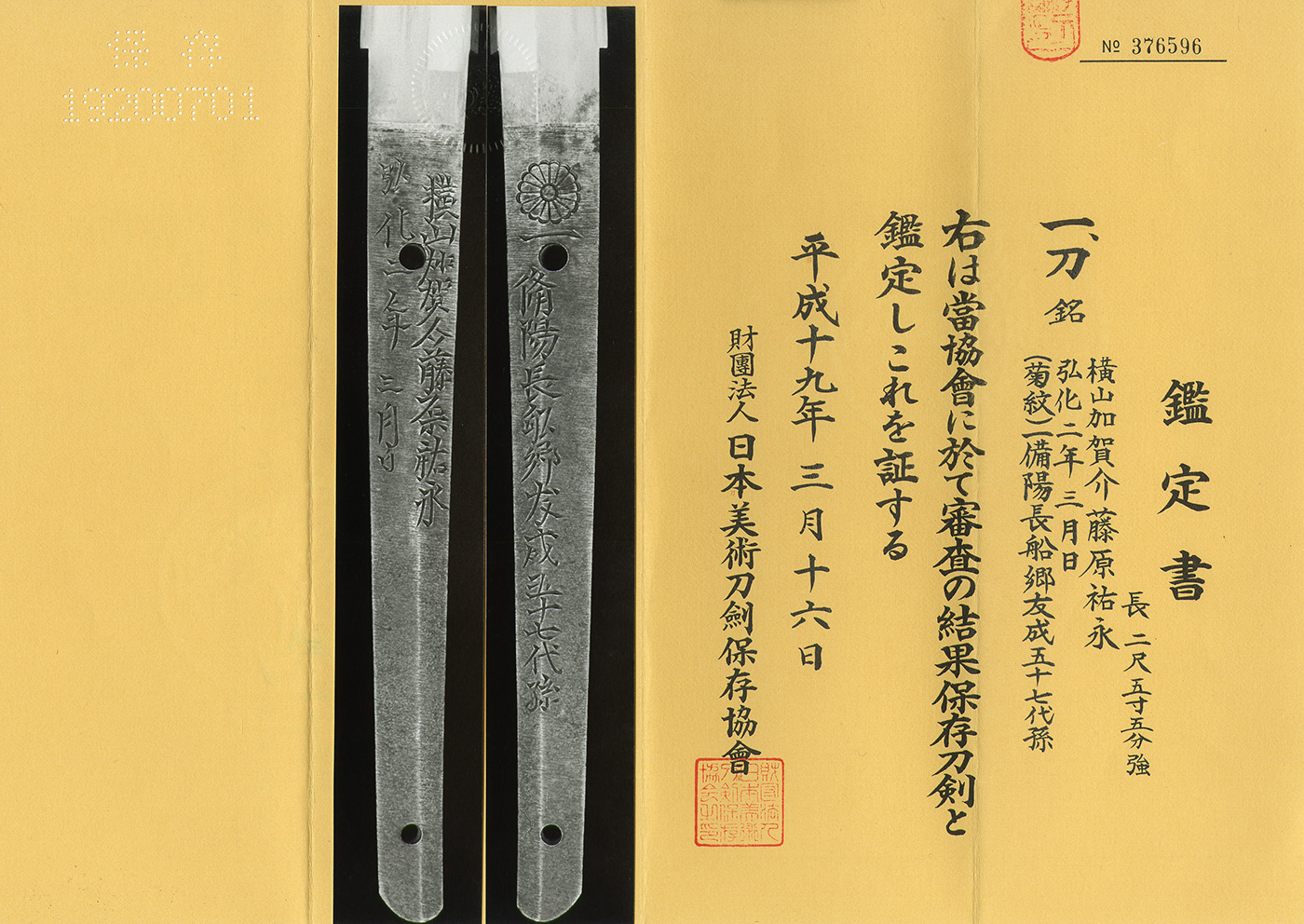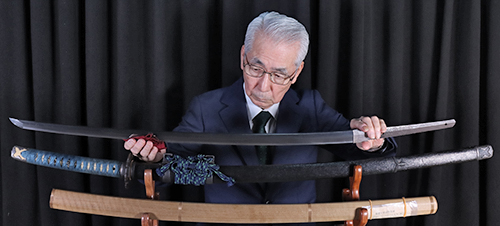Ordering number:AS23298
Katana in Shirasaya with Koshirae (NBTHK Hozon Token)
Explanation: This Katana was made by Yokoyama Kaga Suke Fujiwara Sukenaga in March, 1845.
He was a 57th generation descendant of Bizen Osafune Tomonari.
Shinshinto: Jyojyo Saku: Tenpo Era: Bizen
We divide 4 sections for each sword as Saijyo Saku, Jyojyo Saku, Jyo Saku, and Regular Saku.
This sword is ranked as Jyojyo Saku among the works of Yokoyama Kaga no Suke Fujiwara Sukenaga.
Habaki: Silver single-layered.
Blade Length: 2 shaku 5 sun 6 bu (77.58 cm / 30.54 in)
Curvature: 6 bu 5 rin (1.97 cm / 0.78 in)
Mekugi Holes: 2
Width at Base (Motohaba): 3.14 cm (1.24 in)
Width at Tip (Sakihaba): 1.9 cm (0.75 in)
Thickness of Rim (Kasane): 0.89 cm (0.35 in)
Sword Weight: 965 grams (2.13 lbs)
Era: Around Koka period (late Edo period)
Shape: A wide blade with a thick body, deep curvature, and an extended tip, resulting in a well-balanced, impressive form.
Jigane: The ko-itame hada is well-forged, with fine chikei visible, creating a beautiful texture.
Hamon: A straight, bright suguha pattern with small ashi and a rounded boshi. The hamon is long and exhibits clarity.
Features: Yokoyama Kaga no Suke Fujiwara Sukenaga was a swordsmith active during the late Edo period. This long sword is well-proportioned, with an initial sharp edge and a healthy shape. The blade features solid forging and precise workmanship, showcasing Sukenaga’s skills.
Koshirae Style: Half-Tachi style Koshirae
Tsuba: Iron Tachi tsuba
Fuchikashira: Shakudo nanako with small hexagonal patterns
Kojiri, Seki Kanagu, Ashi Kanagu, and Nioi Kanagu: Various metal fittings, complementing the formal appearance
Saya: Made to imitate the grain of wood
Menuki: Large tiger-shaped menuki
Aoi Art’s Comment: Yokoyama Kaga no Suke Fujiwara Sukenaga was the second son of Sukenobu and succeeded his father's work. He trained and instructed many swordsmiths, with prominent students such as Yokoyama Sukekane, Sukehiro, Sukenobu, and Sukehiro II. The reverse side of the tang bears a chrysanthemum crest and an inscription declaring him the 57th-generation descendant of Tomonari. This sword, made during the chaotic end of the Edo period, focuses on cutting ability, with a bright and straight hamon and beautiful jigane. The blade is housed in a shirasaya, ensuring good preservation. The koshirae is an elegant, old piece from the same period, making this sword highly recommendable.
Historical Background: This sword was made during the period when Japan was divided between imperial loyalists and the shogunate.
NBTHK Hozon Token
Aoi Art estimation paper
Whole Oshigata
Auction Starting Price:650,000JPY







